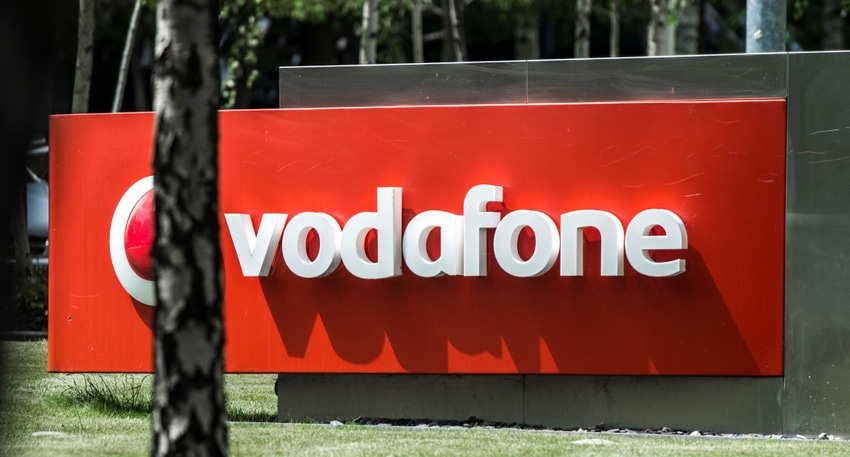Vodafone has announced it will introduce OpenRAN technology in various parts of its UK network, as well as the Democratic Republic of Congo (DRC) and Mozambique.
October 7, 2019

Vodafone has announced it will introduce OpenRAN technology in various parts of its UK network, as well as the Democratic Republic of Congo (DRC) and Mozambique.
In what appears to be an effort to break down barriers to work with new vendors, Vodafone will seek to empower the ecosystem through the introduction of commoditised hardware. This is the first trial of the technology in a ‘developed’ market, leaning on trials which have taken place in Turkey and South Africa.
“We are pleased with trials of OpenRAN and are ready to fast track it into Europe as we seek to actively expand our vendor ecosystem,” said Vodafone CEO Nick Read.
“OpenRAN improves the network economics enabling us to reach more people in rural communities and that supports our goal to build digital societies in which no-one is left behind.”
Launched through the Telecom Infra Project (TIP), the OpenRAN initiative aims to build 2G, 3G and 4G RAN solutions based on a general-purpose vendor-neutral hardware and software-defined technology. With vendor-neutral hardware hitting the networks, the aim is to reduce reliance on a small number of vendors, de-couple the hardware and software components of the network more stringently and reduce the vast expenditure made on network infrastructure.
The UK trial will focus on rural locations, perhaps to reduce the exposure of failure. These are also the cell sites which will cost the most and offer the smallest profits. There is a lot to gain here, while the consequence of failure will be limited.
“Encouraging the emergence of new suppliers would give operators greater choice in a far healthier ecosystem,” said Kester Mann of CCS Insight. “Disrupting the status quo could, in particular, make the economics of network deployment stack up in rural areas or hard-to-reach locations, for which roll-out may not currently be viable or cost effective.
“Improving network economics and better monetising infrastructure assets is an important focus of Vodafone CEO Nick Read as the company seeks to achieve ambitious cost-saving targets.”
Like many of the worlds’ telcos, Vodafone is slowing stumbling towards a tricky situation with its supply chain, though many of the issues are outside the control of the company. With Huawei under increasing pressure, the future does look glum for a segment of the ecosystem which is already under-populated.
However, the telcos are not completely blameless in this situation. Investments have been concentrated with the three major vendors in this space (Huawei, Ericsson and Nokia). Through prioritising these companies as primary vendors, challengers have not been given the opportunity to scale and compete. Another complaint levelled at the telcos has been a comprehensive and convoluted procurement process, which has inhibited the ability of smaller players to compete against the status quo.
When the industry is running smoothly, few would have complained with the concentration of investment to a small number of vendors, but there are wrenches being thrown into the works all over the place.
With Huawei potentially facing bans in numerous countries and its supply chain being compromised thanks to the entry onto the US Entity List, a major vendor is under threat. Although Huawei has confirmed it is producing products free of US components, the performance of this equipment is unknown for the moment. Worst-case scenario, the vendor community could become a lot smaller.
Vodafone is one company which does look to be exposed to the Huawei conundrum. UK CTO Scott Petty has said banning Huawei would set the company back two years in its quest for 5G, costing millions as the company would be forced to strip the vendors equipment out of its network. Huawei equipment currently accounts for 32% of the 18,000 base stations around the country, though it has plans to strip Nokia equipment out, with Ericsson taking the rest.
Only working with two suppliers is a precarious situation, though this is compounded when you look at the difficulties Huawei is facing. The introduction of OpenRAN might be considered a bold move, but it is starting to look very necessary to enable access to more vendors.
The trials in the UK, DRC and Mozambique will focus on mobile calls and data services across 2G, 3G and 4G, with 5G possible over OpenRAN in the future. OpenRAN could be debuted elsewhere across Europe dependent on the success of the trials in the UK.
The team have currently identified 100+ rural locations to trial the technology, though this could be expanded in the future. Vodafone has said OpenRAN could reduce network hardware costs by up to a third, but this is dependent on how the technology and supplier ecosystem develops over time. Mavenir, Parallell Wireless and Lime Microsystems are three new suppliers enabled by the trials, though there are a huge number of start-ups who are connected to TIP.
Although this is a small trial for the moment, it is certainly one worth keeping an eye on. Vodafone is in a slightly tricky position when it comes to its supply chain, though should OpenRAN prove to be successful, numerous options could be opened-up. It is a low risk gamble, though the gains of a new supply chain certainly outweigh the consequence of failure.
About the Author(s)
You May Also Like








.png?width=300&auto=webp&quality=80&disable=upscale)


_1.jpg?width=300&auto=webp&quality=80&disable=upscale)


.png?width=800&auto=webp&quality=80&disable=upscale)